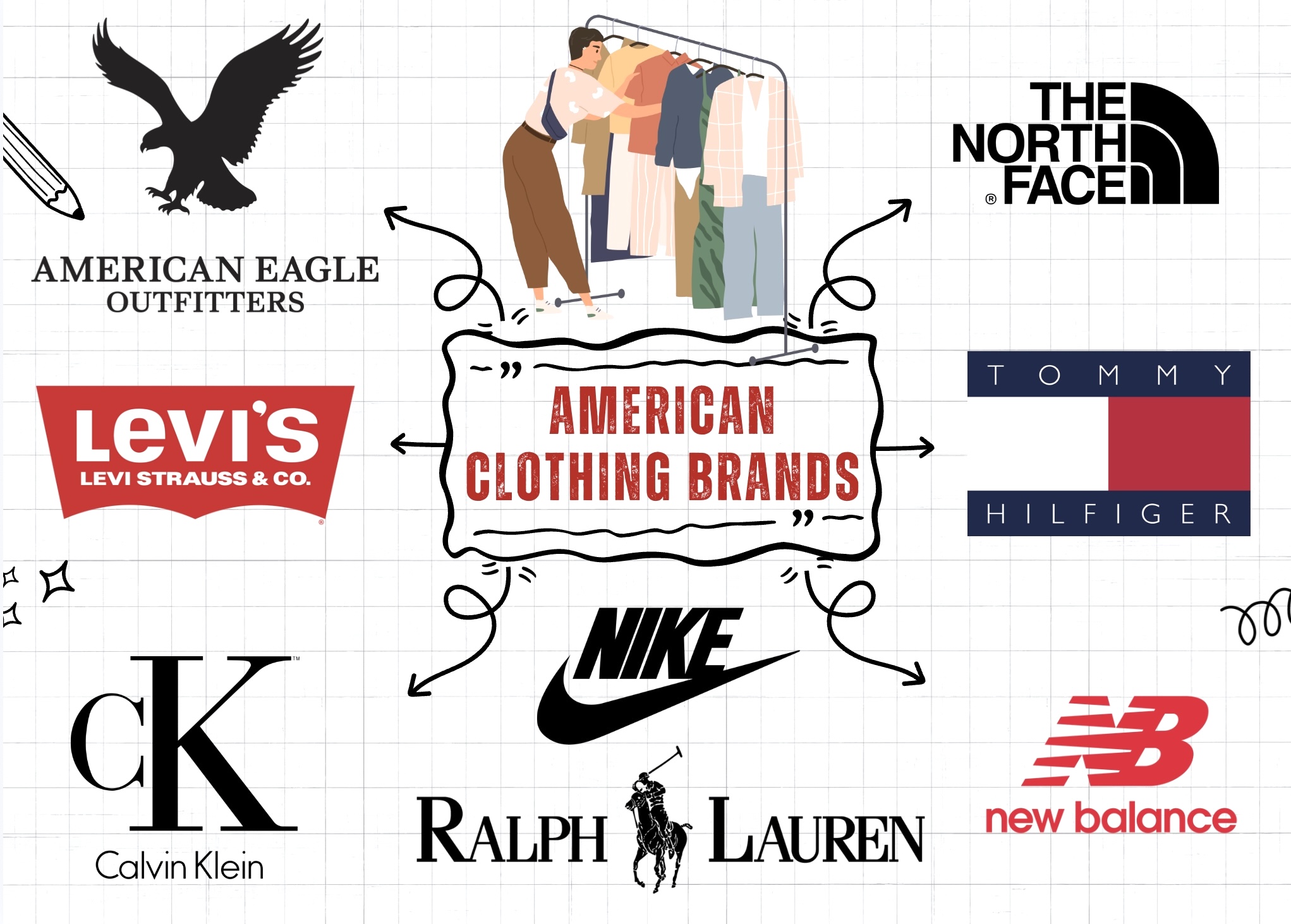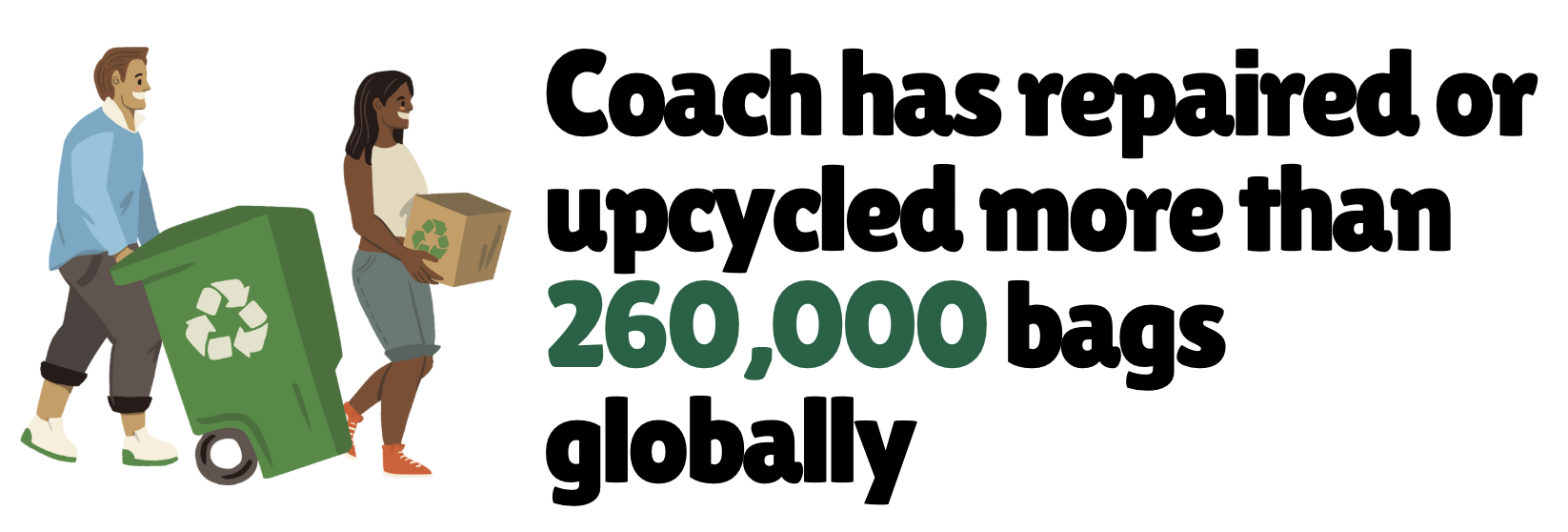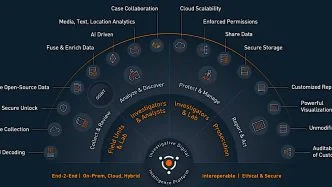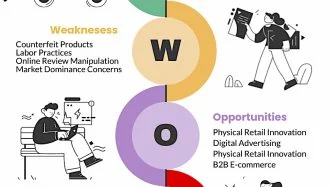With an estimated market value of over $365 billion in 2025, the United States is the largest apparel market in the world, surpassing major fashion capitals like Italy, France, and even China. [1]
American clothing brands (both heritage labels and disruptive newcomers) continue to shape how people across the globe dress, express themselves, and consume fashion.
The US is home to more than 100,000 registered apparel brands, ranging from high-end houses like Ralph Lauren to fast-fashion juggernauts like Old Navy and digitally native disruptors such as Everlane.
Sustainability and ethics are reshaping brand priorities. Nearly 60% of American consumers claim they are willing to pay more for sustainably produced clothing, and newer brands are capitalizing on this trend by offering transparency, traceability, and eco-conscious manufacturing practices. [2]
Below, I’ll explore the most iconic, innovative, and impactful American clothing brands. The article covers brands that shaped 20th-century fashion as well as those driving the shift toward a more sustainable and digitally focused future.
Did you know?The average US household spends over $170 per month, or about $2,041 annually, on apparel and related services. [3] In 2024, the United States imported approximately $83.7 billion worth of apparel, marking a 2.65% increase from the previous year. Most of these imports came from Asian countries, including China, Vietnam, Bangladesh, and India. [4]

Table of Contents
17. Hanesbrands
Founded: 1901Product Categories: Innerwear, Activewear, Casual apparel
Price Range: $5 – $100+
Competitive Edge: Cost discipline via vertical integration
Hanesbrands operates some of the most recognizable clothing brands globally, including Hanes, Champion, Playtex, Bali, Maidenform, JMS/Just My Size, and Bonds. It caters to a broad consumer segment, from value-oriented shoppers to premium sportswear customers.
The company has a vertically integrated supply chain, owning and operating its own manufacturing plants, which allows for tighter control over costs and production quality. This setup is a major differentiator compared to many rivals that rely heavily on third-party suppliers.
In terms of scale, Hanesbrands generates over $3.5 billion in annual revenue and employs more than 41,000 people worldwide. The company ships over 2.2 billion units annually and holds a leading market share in the US innerwear category. [5]
16. Carhartt
Founded: 1889Product Categories: Workwear, Casualwear
Price Range: $30 – $200+
Competitive Edge: Durability, Made-in-USA image
Over more than 135 years, Carhartt has evolved into a global brand renowned for its jackets, coats, overalls, coveralls, dungarees, and flame-resistant gear, blending its industrial heritage with a modern streetwear appeal.
Carhartt has remained family-owned for five generations, allowing it to maintain a strong focus on its core mission:
making products “to serve and protect hardworking people.”
Its iconic products, such as the Carhartt Chore Coat and Detroit Jacket, have become a status symbol both on construction sites and in urban fashion scenes.
Interestingly, its European arm, Carhartt WIP (Work In Progress), has developed its own identity as a premium streetwear label, blending the brand’s rugged image with fashion-forward cuts, colors, and collaborations.
In 2024, the company reported $1.8 billion in revenue and employed approximately 5,500 people. As of today, it commands 12-14% of the global workwear market. Its product mix comprises 45% traditional workwear, 30% performance workwear, 15% lifestyle apparel, and 10% smart workwear.
15. Michael Kors
Founded: 1981Product Categories: Fashion apparel, bags, accessories
Price Range: $50 – $1,000+
Competitive Edge: Accessible luxury, Licensing strength
Headquartered in New York City, Michael Kors has evolved from a high-end boutique label into a global fashion powerhouse under the umbrella of Capri Holdings Limited (which also owns Versace and Jimmy Choo).
The brand operates multiple sub-lines, including Michael Michael Kors (accessible luxury), Kors Michael Kors (mid-tier), and the premium Collection line, catering to different consumer segments without losing its core identity.
This multi-segment luxury fashion model combines direct-to-consumer retail, wholesale partnerships, and licensing agreements. It appeals to aspirational consumers who desire luxury aesthetics without the ultra-premium price tag of brands like Louis Vuitton or Gucci.
Michael Kors products are sold in over 100 countries through 1,200+ stores. Its competitive pricing, strong brand recognition, and extensive global distribution network enable it to maintain a solid market share in the affordable luxury fashion segment. [6]
14. Coach

Product Categories: Handbags, Fashion accessories, Apparel
Price Range: $100 – $450+
Competitive Edge: Affordable luxury, Strong asian market Presence
Coach, part of Tapestry Inc., is an American luxury fashion house known for its high-quality leather goods, particularly handbags. Iconic designs such as the Tabby, Brooklyn, and Rogue have become cultural phenomena, supported by immersive marketing campaigns.
The brand also makes footwear, ready-to-wear apparel, watches, travel accessories, and fragrances, while maintaining leather craftsmanship as its core brand identity.
It has built its reputation on affordable luxury, offering premium designs at price points significantly lower than ultra-luxury brands like Louis Vuitton or Hermès. This positioning allowed the company to capture a large segment of aspirational buyers, particularly in North America and Asia. [7]
Sustainability has also become a cornerstone of Coach’s identity. Through its Coach (Re)Loved program, the brand repairs, refurbishes, and resells pre-owned items, extending product lifecycles and reducing waste.
13. Gap
Founded: 1969Product Categories: Denim, Outerwear, Sleepwear
Price Range: $20 – $200+
Competitive Edge: Iconic brand portfolio, Large retail footprint
Gap Inc. is one of the world’s largest specialty apparel retailers, with a multi-brand portfolio that includes Gap, Old Navy, Banana Republic, and Athleta. It has gained market share across all four labels for eight consecutive quarters and achieved some of its highest gross margins in 20 years.
The company’s identity has long been tied to casual American style, accessible pricing, and broad demographic appeal, catering to men, women, and children globally.
Gap Inc. generates more than $15.1 billion in net sales, with Old Navy as its top-performing division. Online channels contribute over 38% of the revenue, highlighting its strategic shift toward a digital-first retail approach.
In 2025, Gap experienced a fashion resurgence as its logo sweatshirts and 1990s-inspired styles became trendy again. Celebrity endorsements and social media buzz played a big role, with stars like Timothée Chalamet and Anne Hathaway wearing Gap on the red carpet. This surge in visibility helped boost the brand’s sales by 7%. [8]
12. New Balance
Founded: 1906Product Categories: Athletic footwear, Apparel
Price Range: $25 – $250+
Competitive Edge: Domestic manufacturing, Size & fit variability
New Balance offers a diverse range of running, walking, training, lifestyle, and sports-specific footwear, alongside athletic apparel and accessories. Its flagship models (such as the 990 Series, 574, 327, and Fresh Foam running shoes) blend advanced cushioning technologies with timeless aesthetics.
A key differentiator for the company is its commitment to domestic manufacturing. Unlike many rivals that fully outsource production, New Balance operates factories in the US and the UK, producing a portion of its sneakers locally.
This allows New Balance to offer “Made in USA” and “Made in UK” lines, which command a premium price and cater to consumers seeking high-quality craftsmanship and ethical sourcing. And since the company is privately held, it can focus on long-term brand positioning rather than short-term shareholder returns.
In recent years, the brand has captured an increasingly larger share of the sneaker resale market, showing its cultural relevance among younger consumers. In 2024, it achieved $7.8 billion in global sales, a 20% increase YoY. That same year, it opened 90 new stores and remodeled 50 others, continuing its global retail expansion. [9]
Plus, its presence in high-profile sporting events and sponsorship deals with athletes such as Coco Gauff, Raheem Sterling, and the Boston Red Sox further reinforces its credibility in performance sports.
11. Abercrombie & Fitch

Product Categories: Youth fashion, Casualwear
Price Range: $25 – $300+
Competitive Edge: Multi-brand portfolio, Agile trend response
By blending heritage with modern relevance, Abercrombie & Fitch has transformed its dated reputation and repositioned itself as a strong competitor in the American apparel market.
In recent years, the company has implemented a significant rebranding strategy, toning down overt logos, introducing inclusive sizing, and moving away from controversial advertising.
They have embraced inclusivity, expanded sizes and demographics (particularly Millennials and Gen Z), revamped products, and overhauled store design and supply chains, shifting from “teen cast-off” to trend-forward lifestyle brand.
The results speak volumes: In FY 2025, Abercrombie & Fitch’s net sales surpassed $5 billion, with gross profit reaching $3.1 billion and operating income totaling $713 million. Analysts have praised this revival for its execution speed, inventory agility, quality focus, and digital-first footprint, fueling global growth opportunities in Europe and Asia.
10. Wrangler
Founded: 1904Product Categories: Denim, Casualwear
Price Range: $30 – $150+
Competitive Edge: Strong rural and working-class customer base
Wrangler traces its roots back to 1904, when it was founded as the Hudson Overall Company in North Carolina. Renamed Wrangler in 1943 and later acquired by VF Corporation in 1986, it is now under the umbrella of Kontoor Brands, a standalone public company since 2019.
Wrangler’s jeans are known for affordability and ruggedness, making them a wardrobe staple for those who value function and comfort. While its roots lie in men’s workwear, the brand has expanded significantly to include women’s apparel and outdoor wear.
Women’s clothing now makes up 20% of sales (up from 10% in 2019). Collaborations with Lainey Wilson and the expansion of apparel lines have contributed to this growth. [10]
In 2024, Wrangler reported $1.81 billion in global revenue, a 3% increase YoY, driven by growth in US direct-to-consumer and digital-wholesale channels. That year also marked the brand’s 11th consecutive quarter of US market share gains.
9. American Eagle Outfitters
Founded: 1977Product Categories: Youth casualwear, Jeans
Price Range: $20 – $100+
Competitive Edge: Successful Aerie sub-brand, Dominance in denim & intimates
American Eagle Outfitters (AEO) is primarily aimed at high school and university-aged customers, offering a range of products under its American Eagle and Aerie banners, including jeans, graphics, lingerie, personal care items, footwear, and more.
The business is divided into two main segments: American Eagle (casual wear, jeans, outerwear, tops, and accessories) and Aerie (intimates, loungewear, activewear, and swimwear).
AEO operates approximately 1,172 stores (including American Eagle, Aerie, and partner brands) across the US, Canada, Mexico, and Hong Kong, complemented by robust e-commerce platforms. In FY 2025, it generated $5.27 billion in revenue, with operating income of $264 million and net income of $196 million. [11]
8. Patagonia

Product Categories: Outdoor gear, Lifestyle, Ethical fashion
Price Range: $70 – $700+
Competitive Edge: Gold standard in sustainability, Circular economy leadership
Patagonia’s product lineup includes jackets, fleeces, outdoor gear, backpacks, and trail running and climbing apparel. It is well known for its best-selling Nano Puff jackets, Better Sweater fleeces, and rugged outdoor gear.
Patagonia extensively utilizes recycled materials, accounting for over 68 to 75 percent of its production, while also adopting organic and regenerative cotton and developing PFC-free waterproofing technologies. Its resale platform, Worn Wear, promotes used clothing and trade-ins, encouraging circular consumption.
Unlike competitors who treat sustainability as a marketing tactic, Patagonia lives it through measurable action, from recycled textiles and carbon-neutral operations to repair centers and environmental lawsuits. They have earned extraordinary brand trust, which has translated into customer loyalty and pricing power. [12]
However, what truly distinguishes Patagonia is its radical approach to business. The company donates 1% of its sales to environmental causes and, in 2022, transferred ownership of the entire company to a trust and nonprofit focused on fighting climate change and protecting the planet.
7. The North Face

Product Categories: Outdoor wear, Technical gear
Price Range: $50 – $700+
Competitive Edge: Innovation in materials, Sustainability push
What began as a brand for climbers and backpackers has evolved into a household name among hikers, skiers, snowboarders, urban explorers, and fashion-forward consumers alike.
Its iconic half-dome logo, inspired by the north face of Half Dome in Yosemite National Park, symbolizes ruggedness, exploration, and durability.
The brand operates in 50+ countries and sells through a combination of DTC channels, outdoor retailers, and department stores. It has also collaborated with streetwear giants like Supreme and designers like Gucci, further amplifying its cultural relevance.
The North Face continues to innovate with sustainable materials, such as Futurelight, and practices like circular design in response to increasing environmental concerns. In 2025, it reintroduced its classic 1980s Mountain Jacket, updated with recycled Dryvent fabric and Gore-Tex technology, reflecting its blend of timeless design with modern sustainability and performance.
Furthermore, The North Face is one of the largest outdoor apparel brands globally. It remains a top performer under its parent company, VF Corporation (which also owns Vans, Timberland, and Dickies).
6. Under Armour
Founded: 1996Product Categories: Performance sportswear, Compression wear
Price Range: $25 – $200+
Competitive Edge: Athlete-Driven Brand, Collaborations with elite athletes
Under Armour is a sportswear and athletic apparel brand famous for its performance-driven products, particularly its moisture-wicking apparel technology. Unlike fashion-first rivals, its focus has consistently been on helping athletes perform better through advanced material technology, including sweat-wicking fabrics, compression gear, and breathable mesh.
Under Armour’s early success was driven by a grassroots strategy of targeting college teams, professional athletes, and military units. Its “Protect This House” campaign became iconic in the early 2000s, helping build its aggressive and performance-first brand identity. By the 2010s, it had become a billion-dollar brand, entering new categories like footwear, accessories, and connected fitness.
In FY 2025, Under Armour reported revenues of approximately $5.16 billion, accompanied by a net loss of $201 million and an operating loss of $185 million, reflecting a challenging market and structural reset. Despite top-line pressure, the brand managed to boost its gross margin to 47.9%, thanks to supply chain efficiencies and reduced discounting. [13]
5. Tommy Hilfiger
Founded: 1985Product Categories: Preppy fashion, denim, Lifestyle
Price Range: $30 – $400+
Competitive Edge: Omnichannel Presence, Celebrity collaborations
Tommy Hilfiger gained prominence in the 1990s by embracing pop culture, particularly hip-hop and youth trends, which helped make its iconic red, white, and blue flag logo recognized worldwide. The brand offers a versatile portfolio that includes apparel, accessories, fragrances, and homewares.
Today, the brand operates in over 100 countries and maintains a massive presence through flagship stores, department retailers, and a robust e-commerce platform. The seamless integration of physical stores, pop-ups, e-commerce, and wholesale delivers convenience and broad accessibility.
Influencer and celebrity endorsements, from Zendaya to Lewis Hamilton, have reinforced Tommy Hilfiger’s relevance, particularly among younger consumers.
The company launched “Sofia for Tommy” with Sofia Richie Grainge, a 24-piece “coastal cool” collection featuring sophisticated prep wear priced between $50 and $399, showcasing inclusive sizing and modern elegance.
4. Calvin Klein

Product Categories: Underwear, Casualwear, Jeans
Price Range: $20 – $400+
Competitive Edge: Minimalist brand identity, Strong parent support
Calvin Klein has developed a bold brand identity, shaped by decades of cultural relevance, provocative advertising, and a timeless design aesthetic. Its campaigns consistently challenge norms, addressing themes such as identity and gender fluidity.
Calvin Klein operates under the umbrella of Phillips-Van Heusen (PVH) Corporation, which also owns Tommy Hilfiger and other brands. It spans multiple product lines, including underwear, denim, casual wear, formal wear, fragrances, and accessories. One of its strongest product segments is its underwear line, which remains a cultural touchstone, especially among younger demographics.
The company has launched major regional campaigns in Asia and Latin America to boost brand penetration in emerging markets. Under PVH, it benefits from consolidated operations, wholesale control, and integrated production, especially after PVH acquired its key licensee, Warnaco.
3. Ralph Lauren
Founded: 1967Product Categories: Luxury and mid-tier fashion, Home furnishings
Price Range: $50 – $3,000+
Competitive Edge: Iconic heritage, Hybrid distribution model
Ralph Lauren defines premium American style with a blend of casual elegance and aspirational luxury. Its signature Polo Ralph Lauren logo (featuring a polo player on horseback) has become one of the most recognized brand symbols in the world.
The company operates in 80+ countries and maintains a strong retail presence, with 564 standalone stores, 699 mall-based boutiques, and 195 licensed stores.
It has cultivated a multi-tiered brand architecture to serve a diverse audience, from luxury to mid-range fashion, under labels like Polo Ralph Lauren, Purple Label, Double RL, and Chaps.
In FY 2025, the company recorded YoY revenue growth of 9.6% to $7.28 billion, led by strong international performance, especially in Europe and Asia. The annual gross margin stood at 69%. [14]
That same year, it opened a luxury “Purple Label” boutique in Adelaide, featuring items priced as high as $8,000 for a suede jacket and $6,000 for a suit, bringing premium craftsmanship to new markets.
2. Levi Strauss
Founded: 1853Product Categories: Denim jeans, Casualwear
Price Range: $40 – $150+
Competitive Edge: Global brand heritage, Operational agility
Levi Strauss is famous for inventing blue jeans and popularizing durable, timeless denim wear. Over the decades, Levi’s has evolved from supplying miners during the Gold Rush to becoming a multi-category apparel powerhouse.
Its flagship product, the Levi’s 501 Original, is still a top seller and a cultural icon that has endured countless style shifts. Levi’s also thrives as a cultural symbol. From James Dean to Steve Jobs, the Levi’s brand has clothed rebels, icons, and innovators. [15]
The company operates a multi-brand portfolio that includes Levi’s, Dockers, Denizen, and Signature. While Levi’s dominates the premium denim space, Denizen and Signature cater to mass-market segments through big-box retailers like Walmart and Target.
The company has also embraced circular fashion and pioneered Water<Less manufacturing (which reduces up to 96% of the water normally used in denim finishing).
In FY 2025, the company generated $6.48 billion in revenue, marking an 8.29% increase YoY. It continues to expand its global footprint, operating around 3,400 company-owned stores and selling products through department stores, specialty retailers, and online platforms in over 110 countries.
1. Nike

Product Categories: Footwear, Athleisure
Price Range: $30 – $1000+
Competitive Edge: Brand equity, Unrivaled athlete endorsement
With a massive global presence and a cult-like customer following, Nike is widely regarded as the most dominant athletic apparel and footwear brand in the world.
It maintains 14-15% global market share in sportswear, and even higher in the United States (around 30–35% in key categories like basketball and running shoes). It generates approximately $46.3 billion in annual revenue, with a gross margin ranging between 42% and 45%. [16]
Much of Nike’s rise can be attributed to its deep connection with global sports culture. From Michael Jordan’s legendary Air Jordan line to partnerships with LeBron James, Serena Williams, and Cristiano Ronaldo, Nike built a billion-dollar endorsement empire. [17]
Nike also collaborates with brands like Off-White, Sacai, Travis Scott, and Supreme to release high-end limited collections that often resell for 3-10 times their retail price.
Simultaneously, the company has committed to sustainability, with programs like “Move to Zero” targeting net-zero emissions and waste. Over 147 million pounds of footwear material have already been recycled through its Nike Grind program.
Read More
- Nike Marketing Strategy: 19 Proven Ideas
- Adidas SWOT Analysis [Detailed View]
- 15 Japanese Clothing Brands
- Market Insights, Apparel market in the United States, Statista
- Jordan Bar Am, Consumers care about sustainability, McKinsey
- Jack Caporal, American households’ average monthly expenses, Fool
- Report, Apparel export competitiveness of certain suppliers to the United States, USITC
- David Swartz, Hanesbrands’ actions are supporting its brands and financial health, Morningstar
- Fashion & Accessories, Michael Kors is one of the leading luxury companies worldwide, Statista
- Maliha Shoaib, Coach’s Gen Z appeal drives Tapestry sales up 5%, Vogue Business
- Lauren Cochrane, Gap is making a surprise fashion comeback, The Guardian
- Brad Smith, New Balance sales jump 20% in 2024, Yahoo Finance
- Kristin Broughton, Wrangler and Lee jeans maker’s plan for growth, WSJ
- Apparel & Shoes, Number of stores of American Eagle Outfitters worldwide, Statista
- Yvon Chouinard, Patagonia shows how turning a profit doesn’t have to cost the Earth, McKinsey
- Company Financials, Under Armour’s profit margin throughout the years, Macrotrends
- Earnings Releases, Ralph Lauren reports first quarter fiscal 2026 results, Ralph Lauren
- Laura Hawkins, Why the Levi’s 501 jeans have been the style uniform, Vogue
- Helen Reid, Adidas targets larger US market share as Nike struggles, Reuters
- Professional Sports, Nike’s endorsement contracts commitments worldwide, Statista


